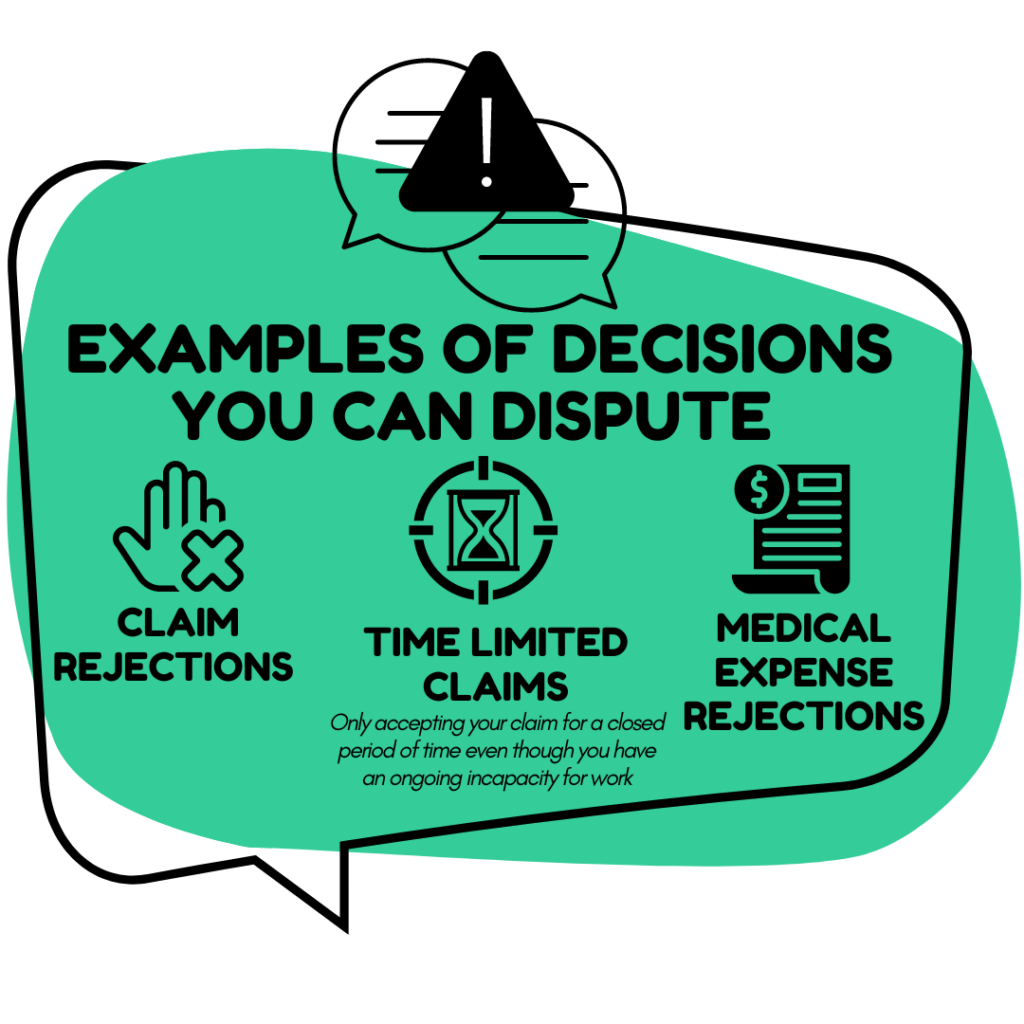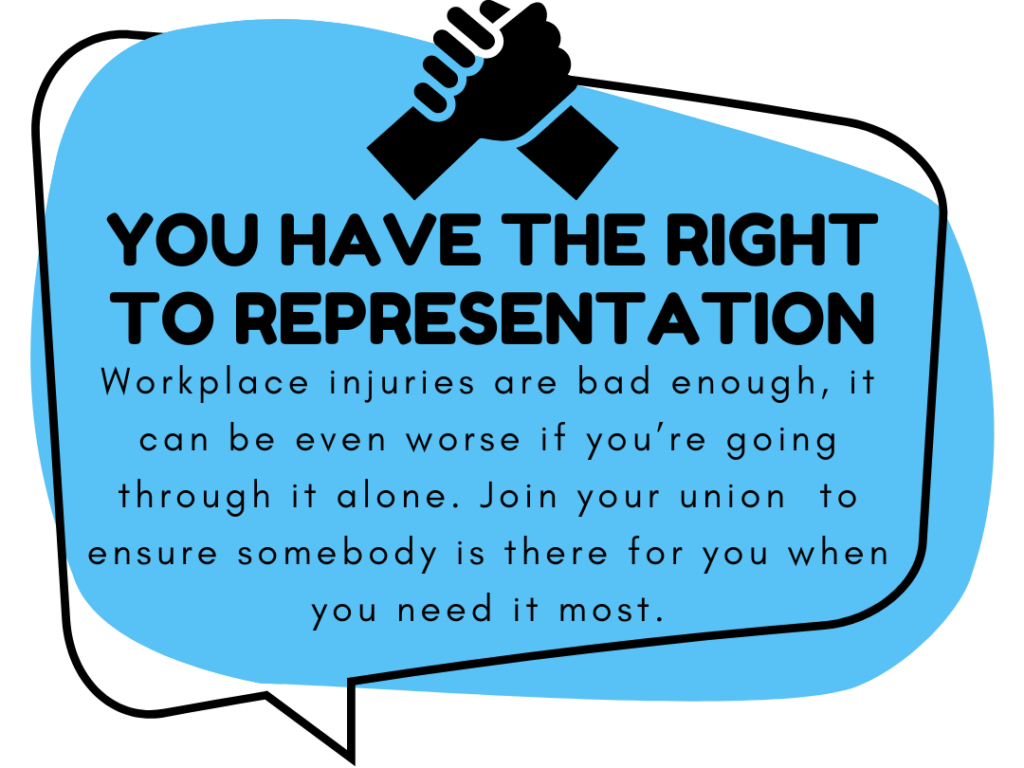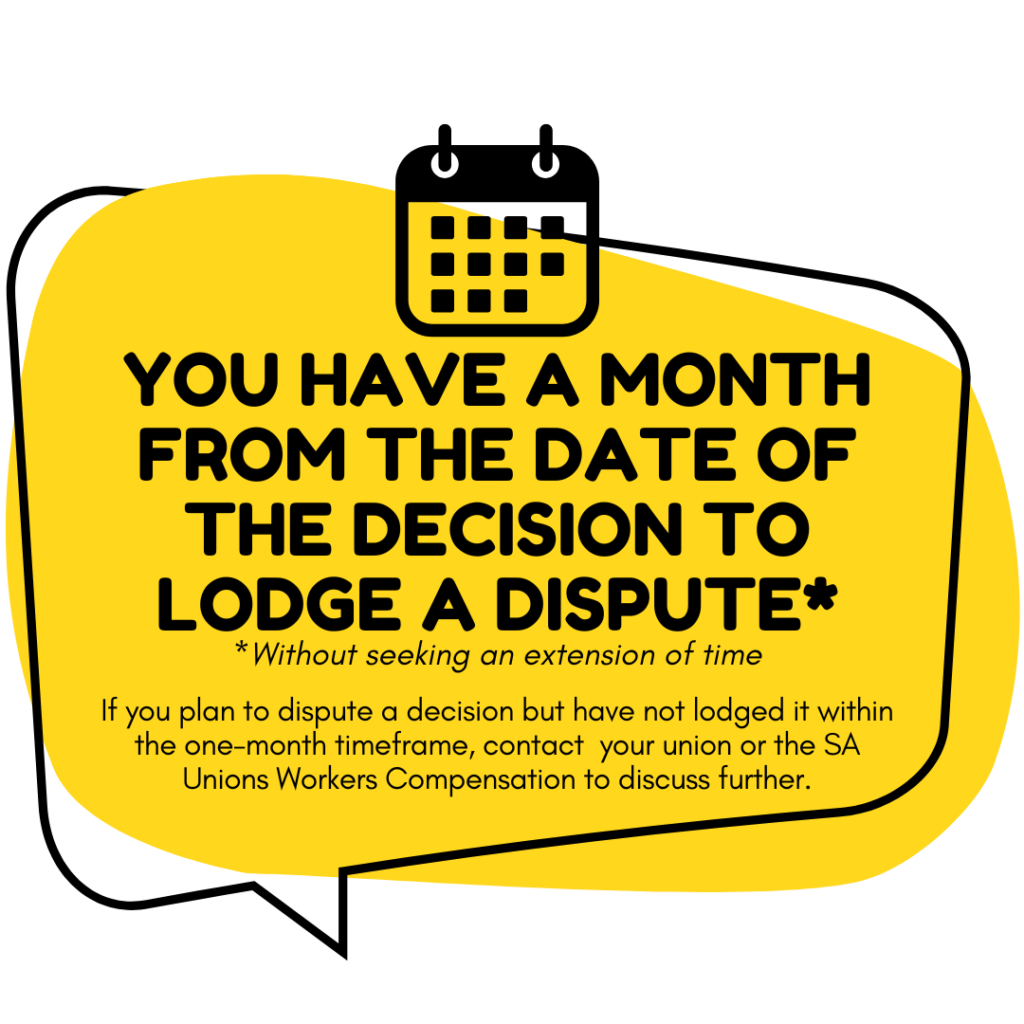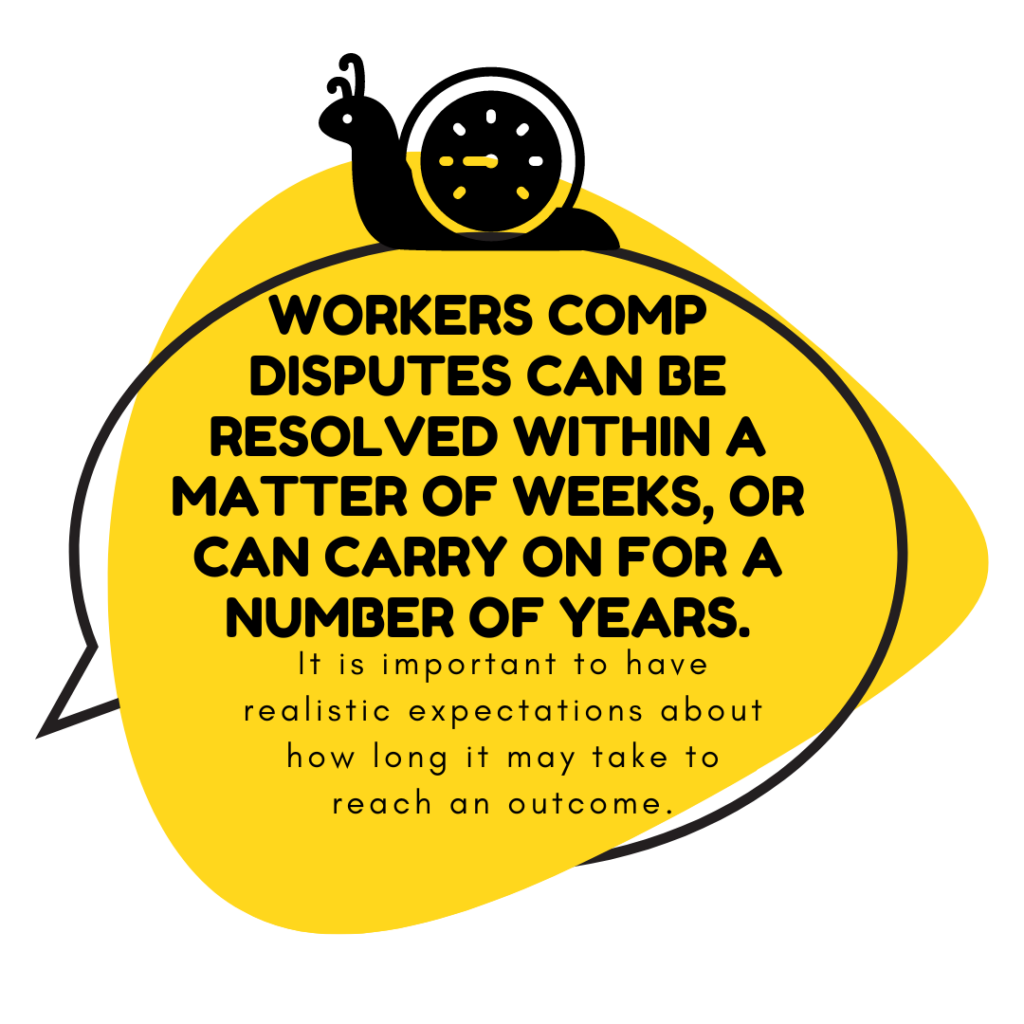
Most decisions made by the insurer about your workers compensation claim can be disputed. All disputes or reviews are heard before the SA Employment Tribunal (SAET or Tribunal).

Learn more about applying for workers’ compensation here.
The process can be difficult to navigate and disheartening at times. However, many disputes are resolved at the conciliation stage. The sheer number of decisions that get overturned in the SAET, either through conciliation or at trial, reinforces that it is usually a battle worth having.
Your union and/or the SA Unions Workers Compensation Service are here to support you to achieve the best possible outcome.
Many workers tell us that they thought that lodging a dispute would be a simple internal process with the insurer and they did not realise that it would result in a matter being listed with the South Australian Employment Tribunal (SAET).
To many, this can seem daunting and formal, but the information in this info sheet will outline what to expect, and the SA Unions Workers Compensation Service can help you navigate the process.
It is recommended that any worker lodging a dispute at the SAET has legal representation. While not legally required, the insurer or self-insured employer will be represented by a lawyer and the arguments can be technical and confusing.
The best support you can get is through your union. It’s important that you are a member before an injury occurs. Join your union today.
If you are not a union member, the SA Unions Workers Compensation Service may be able to represent you at no cost.


The insurer and your employer will be notified that a dispute has been lodged and sent a copy of your application and supporting documents. You will receive a copy of the submitted application for review and a notice advising that the matter has been listed for an Initial Directions Hearing (IDH) with a Commissioner in the SAET.
The insurer will allocate a dispute resolution officer to conduct a reconsideration, which means that they will double check the decision and consider any further information to determine if they are going to change the decision that is being disputed. They will contact you by phone and/or email to advise that they are undertaking this process and ask you if you have any further information to provide.
The insurer will then issue a Notice of Reconsideration. The decision will have either been confirmed (they agree with their original decision), varied (they alter their decision in some way), or set aside (they withdraw their decision). If the decision is confirmed, the matter will proceed to the conciliation process and the scheduled IDH will proceed at the SAET.

If you are just seeking an administrative amendment to a decision, for example, if a date or detail is listed incorrectly, you and your union should contact the insurer directly. If it is within 14 days of the decision being issued, they may be able to make an administrative amendment. If an amendment is not made quickly i.e., within five (5) days, you should lodge an application for review with the Tribunal. For any other disputes you will need to lodge an application for review.
You can lodge the dispute yourself on the SAET website, using the form A02 – Application for Review (Return to Work). Alternatively, you can contact your union or the SA Unions Workers Compensation Service and we can help you lodge the dispute.


Is where each party details their position on the dispute and any required documentation or evidence is discussed.

Designed to allow the parties to reach a negotiated agreement based on the information now available. A conciliation conference date will be set for approximately six weeks after the initial directions hearing, during which the parties will provide the required documentation as agreed.
If the parties are negotiating, sometimes there may be more than one conciliation conference. If it is clear that the matter is not progressing and an agreement cannot be reached, the matter will be referred to be heard in front of a Judge.

The Commissioner, who has been acting as an impartial mediator in the conciliation process, will provide recommendations about the facts of the case and may speak to the parties about the merits of their arguments.
If they believe that a party is unlikely to succeed, they may caution the party with that advice, and indicate that the party may be liable for costs at trial.
It is best that you have representation for any hearings or conferences. They can be quite formal and legalistic which can be overwhelming for those who are not familiar with the process and with the Return to Work Act (SA 2014).


Workers compensation disputes can be resolved within a matter of weeks, or can carry on for a number of years.
It is important to have realistic expectations about how long it may take to reach an outcome.
Once resolved, there will usually be delays in receiving monetary compensation due to a number of factors, such as formalisation of the outcome through SAET orders, calculation of payment amounts, government clearances (i.e. Medicare, Centrelink, etc.) required by law, etc.